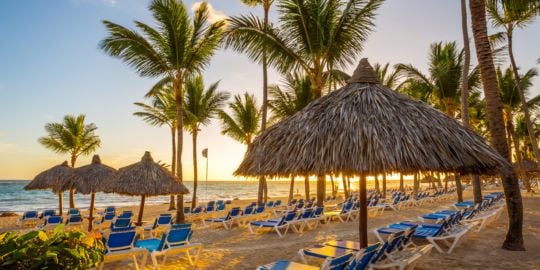I look forward to living in a place that has a definite sense of community and it sounds as if DR still has it. Community is very important to me for its general sense of well-being, security, and happiness. I now live in San Francisco, CA, a couple of years from retirement. I have long been interested in living in the DR city of Constanza. I have read that it has a mild, Mediterranean-type climate due to its high altitude and is surrounded by a rich agricultural area. Please share any information you have on Constanza:
o the cost of living;
o the availability of decent places to live and shop;
o the crime; and
o its climate;
o as an agricultural area, are there many fresh fruits and vegetables at cheap prices?
o the distance from Constanza to the major cities?
o the distance to the discount, high volume stores where one can buy things economically?
o Availability of Costco stores? Wal-Mart? Target; or similar stores? Puerto Rico has a few Costco's.
Please share your thoughts, knowledge, and experiences of Constanza or similar places in the DR. Thank you.
Seeking Info on Constanza
I know little about this town. But i do know Pricesmart - like Costco - one in Santiago and in Santo Domingo!!!
This is what I've found on the area from https://books.google.com/books?id=r5eXy … mp;f=true:
EL CIBAO AND
CORDILLERA CENTRAL
Heartland of the Nation
The interior heartland of the country is the Valle del Cibao (colloquially called El Cibao and formerly known as Vega Real, or Royal Plain). This vast fertile flatland is framed by the ruler-straight Cordillera Septentrional to the north and, to the south, by the Cordillera Central—the Caribbean's highest mountain chain. El Cibao, which is drained eastward by the Rio Came, and westward-by the Rio Yaque del Norte, and the mid- elevation valleys of the Cordillera Central are together the breadbasket of the nation. Rice, bananas, and tobacco are the three main products of the lowland plains. Coffee and cacao are grown on the foothills slopes. And the alpine valley around Constanza, in the Cordillera, delivers most of the fresh vegetables eaten throughout the nation.
During the 19th century, Santiago de los Caballeros (the republic's second largest city) and the neighboring agricultural centers of La Vega and Moca grew wealthy and vied with a the capital for political dominance as the main centers of the independence movement. Haitian invasions and internecine warfare between ambitious caudillos led to most cities being repeatedly razed. Nonetheless, Santiago still retains much of its colonial architecture and, along with its world-class Centro Leon art gallery and museum, has enough to keep) you occupied for a full day or longer. Nearby Tamboril is a center for cigar production. And the town of La Vega has a magnificent (albeit controversial) cathedral, while nearby Santa Cerro is a major pilgrimage site and also the setting for the early colonial ruins of La Vega Vieja. La Vega is also renowned for the liveliest of the nation's carnavales.
Meanwhile, active travelers aren't forgotten. Much of the region is protected within national parks. You can take to the Cordillera Septentrional for-hiking and birding (and even spot the near-extinct solenodon) in Reserva Cientifica Quita Espuela. The towering Cordillera Central, which forms the island's rugged backbone, is also-known as the Dominican Alps, drawing city dwellers to the cool, pine-scented mountain resort of Jarabacoa, an activity center known as the beginning point for whitewater rafting and as a gateway for challenging three-day round-trip hikes to the summit of Pico Duarte (10,164 feet/3,098 m). Pico Duarte is one of three peaks topping 10,000 feet in this remote and wild world of razorback ridges and plunging gorges sparkling with crashing cascades. And nearby Constanza, in a Shangri-La-like alpine valley, is the gateway to the equally remote and rugged Pargue Nacional Valle Nuevo.









